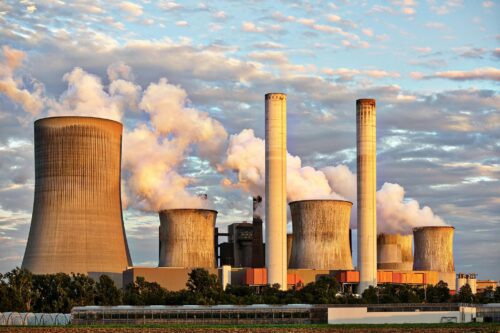Image courtesy of Pexels.
Since the industrial revolution, human civilization has been adding more carbon dioxide to the atmosphere by burning fossil fuels, supercharging global temperature rise. This temperature change has resulted in food insecurity, more severe storms, warming oceans, and much more. In an effort to combat this, scientists have increasingly focused on the study of carbon sequestration, where captured carbon dioxide is collected from the atmosphere and put away in permanent storage.
A promising approach for long-term storage involves injecting carbon dioxide deep into the earth for permanent geological containment. However, the way carbon dioxide behaves when it is injected into the ground has long been poorly understood. Researchers at Yale have worked to create a new method that improves the simulations of underground carbon dioxide using machine learning, combining neural networks to efficiently handle the large and complex computational challenge of modeling geological carbon sequestration. This innovative approach is supported by a collaborative effort from multiple scientific disciplines, pooling expertise to tackle the complexities of carbon sequestration
Computer models can predict how the injected carbon dioxide will move through pores in the rock underground based on factors like pressure, temperature, and fluid interactions. It is important for scientists to understand how this carbon dioxide will move because they must ensure that the carbon dioxide can be stored safely without leaking and creating unwanted chemical reactions, which can weaken the rock or cause further environmental damage. Traditional models struggle to generalize the situations underground, meaning if the conditions below the surface changed slightly, the model would need to be retrained. Unfortunately, this has made real-time simulation impractical and challenging.
The Nested Fourier-DeepONet (NFDN) method proposed by Yale researchers improves older models by running these simulations much faster and making them more adaptable to new conditions. Machine learning models are programs that take data and use it to learn and make predictions. The NFDN model is a machine learning model designed to address the problem of simulations of underground carbon dioxide storage. This model uses a “nested” structure of neural networks, incorporating variables such as movement over an entire storage area and injection points at different scales while it learns. Taking into account these varying conditions allows the model to adapt to new and dynamic situations. “The advantages of this architecture is that it can accurately predict […] the build-up of pressure and how saturated the gas is, but the disadvantage is that we need a large amount of data, so there is a trade-off,” said Jonathan Lee, a PhD student in the Yale Department of Chemical and Environmental Engineering. “Once we train the neural network, we can make predictions within a fraction of seconds, so like for anything that requires instant predictions, this deep network is more advantageous over numerical simulations.” This serves to make geological modeling of stored carbon dioxide more scalable and reliable, which directly supports efforts to combat climate change.
One limitation of the model is that it can only make accurate predictions for the training regime it has seen before. “We can get some new data, like new cases, and do fine-tuning with the new model, and the new model can make better predictions for the cases. That’s the future area of research, the fine-tuning part for samples it has not seen before,” said Min Zhu, a PhD student in the Yale Department of Statistics and Data Science.
This model can also equip scientists with the knowledge to create more optimal carbon dioxide injection strategies for safer long-term storage. These advancements also go beyond carbon storage, opening the door to new possibilities in energy, resource extraction, and sustainable technology. This technology could be used in geothermal energy to model heat flow dynamics, in oil recovery to predict fluid movement in oil reservoirs while maximizing extraction efficiency, and to help scientists find safe underground storage sites for hydrogen to guide the future of clean energy solutions.

